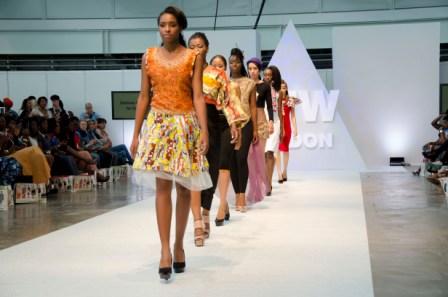All over the various cities in the country, bright and colourful boutique punctuate every major road. They parade tempting attires form the biggest labels in the US, UK, Italy and France. Even the African celebrities show off with these labels and promote them more than ours. None the less, the country has witnessed a growth in its fashion industry, houte couture wise.
These fashion houses have taken the situation head on, and in spite of all the predictions of gloom and doom they have kept their heads up; ensuring that the houte couture industry remains a force to be reckoned with fashion-wise.
We have fantastic fashion shows; showcasing breathtaking clothes but how lucrative is the houte couture business especially in West Africa?
Chris Asekomeh, the man behind the Chris and Steeze label believes the infrastructure issues in the country is a strain on all its industries including fashion. He said: “Fashion business is quite lucrative but we encounter a lot of challenges; we have poor power supply, so you have to get fuel to power your generator, then there is the issue of getting your fabrics and all that.”
With all that eating into your profit, what keeps these designers going through the decades? Asekomeh for his own part said it is his passion for the business that keeps him going. “You must have love for fashion. That way you can put money as your second priority because everybody likes to look good but not everybody wants to pay for it. The average customer would rather owe you” he said.
He also believes the boutiques have it easier. “The boutiques make the bulk of the profit in the fashion industry because customers simply buy off the rack. With couture you are making clothes to particular specifications and your client has to be satisfied with the outfit before your job is done. So with boutiques, customers only buy what they see. It is easier.”
The question is: After a fashion show, what would happen to the clothes that were not purchased?
Asekomeh said: “After every fashion show we keep some of them for photo shoots, give out some of them our in-house models, and store the rest of them for our end of the year sale. We have very good and classy customers who buy.”
Apart from the fact that the Ankara is now being ‘copied’ by foreign fabric manufacturers, the African fabrics still stand out. Especially those produced with the native methods. This uniqueness drew attention to the fashion shows organised by West Africans, especially Nigerians in places like London, Paris, Johannesburg and several other fashion hotspots around the world. Many watchers fear that this buzz would die down too soon because of the rate at which our local fabrics and traditional styles are being copied.
Nonetheless, the progress continues and Asekomeh believes there is an ever growing acceptance for our traditional fabric and styles. “Sincerely speaking our clothes, fabrics and style has become a force to reckon with and is accepted and loved by African Americans and even Europeans. We have been able to showcase our work on international stage. The turnout in the last Ankara show in the UK was massive; so many people came to see how rich and beautiful our fabrics and style are.”





















